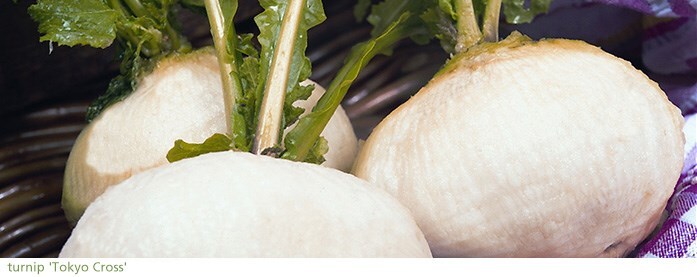The delights of turnips

 Turnips get a bad press.
Turnips get a bad press.
In the minds of many they’re only one step up from cow food. They’re fall-backs, winter staples, the kind of thing you only eat if you really have to and there’s absolutely nothing else left on the veg rack. Peasant food, in fact: in fact I’m pretty sure harvesting turnips is what the peasants in the Holy Grail were doing.
It’s not the turnip’s fault. Yes, it’s been used to feed animals, and you still get sheep let onto turnip fields to eat the tops – but you shouldn’t hold that against the poor vegetable. It was also your standard peasant potato in the Middle Ages, before Sir Francis Drake arrived back from South America with an odd-looking Peruvian root vegetable in his pocket. Tudor peasants ate turnips with everything, which somewhat explains the poor-man’s-veg tag.
But it’s hardly fair on a veg that’s actually a lot nicer than most people think it is. Perhaps it’s time we had a bit of a revival. After all we did it for kale – also an animal feed before the foodies got hold of it.
It’s not even like it’s ugly. Celeriac – now that’s a veg which ought to have an image problem. All those warts and hairy bits. Yet the foodies can’t get enough of it. So it should be easy with something as pretty as a turnip: just look at it, blush pink on the top, shading to pearly white below. Gorgeous.
And the flavour: earthy with umame overtones (the fifth sense; a sort of savoury. You have to get in a bit of Guardianista food columnist jargon if you’re going to hook in the Jamie Olivers and the Gordon Ramsays of this world). It reminds me of some of the milder oriental vegetables: komatsuna, perhaps, or maybe chrysanthemum greens (shungiku). And it doesn’t come much more hip ‘n’ trendy than orientals.
A lot of people don’t know what to do with them, of course. Actually, they’re pretty versatile: just think parsnips. Whatever you can do to a parsnip, you can do to a turnip too. Roast them, mash them with carrot (yum) or sometimes potato; make wonderful warming soups from them or braise them gently in chicken stock and herbs. Or – our favourite way of eating winter vegetables bar none – cut into large cubes, drizzle with olive oil, salt and pepper and sprigs of rosemary and bake them in a big tray with squash, potatoes, carrots for around 45 minutes. It’s a meal in itself.
You can also eat the leafy greens, or ‘tops’, like an unusual umame side vegetable (Jamie and Gordon, I hope you’re paying attention) steamed lightly rather like spinach. Sow now and you probably won’t get the roots (unless you grow the super-fast ‘Tokyo Cross’ and it’s a mild autumn) – but you will get turnip greens for picking right through till December.
Turnips are wondrously easy to grow: I start an early crop in modules in February or early March to transplant outside in April, but after April you can just sow them direct. The slugs don’t much like the foliage, though the caterpillars do so I usually pop a bit of fleece over the top. They’ll soldier on steadily more or less whatever you do: pull them during summer at around tennis ball size, or leave to grow a little larger (when the flavour is also stronger) and pull in autumn to store in boxes of damp sand over winter.
Oh, and PS: if you are sitting in Edinburgh reading this you will by now be very puzzled. By turnip I mean the small white root vegetable. In Scotland, where they have turned being contrary into a fine art (sorry) turnips, or ‘neeps’ refers to swedes, the big orange turnip-like vegetables which nobody else calls turnips apart from the Scots. And swedes are turnips. So none of the above will make any sense to you whatsoever. Sorry.




 Turnips get a bad press.
Turnips get a bad press.